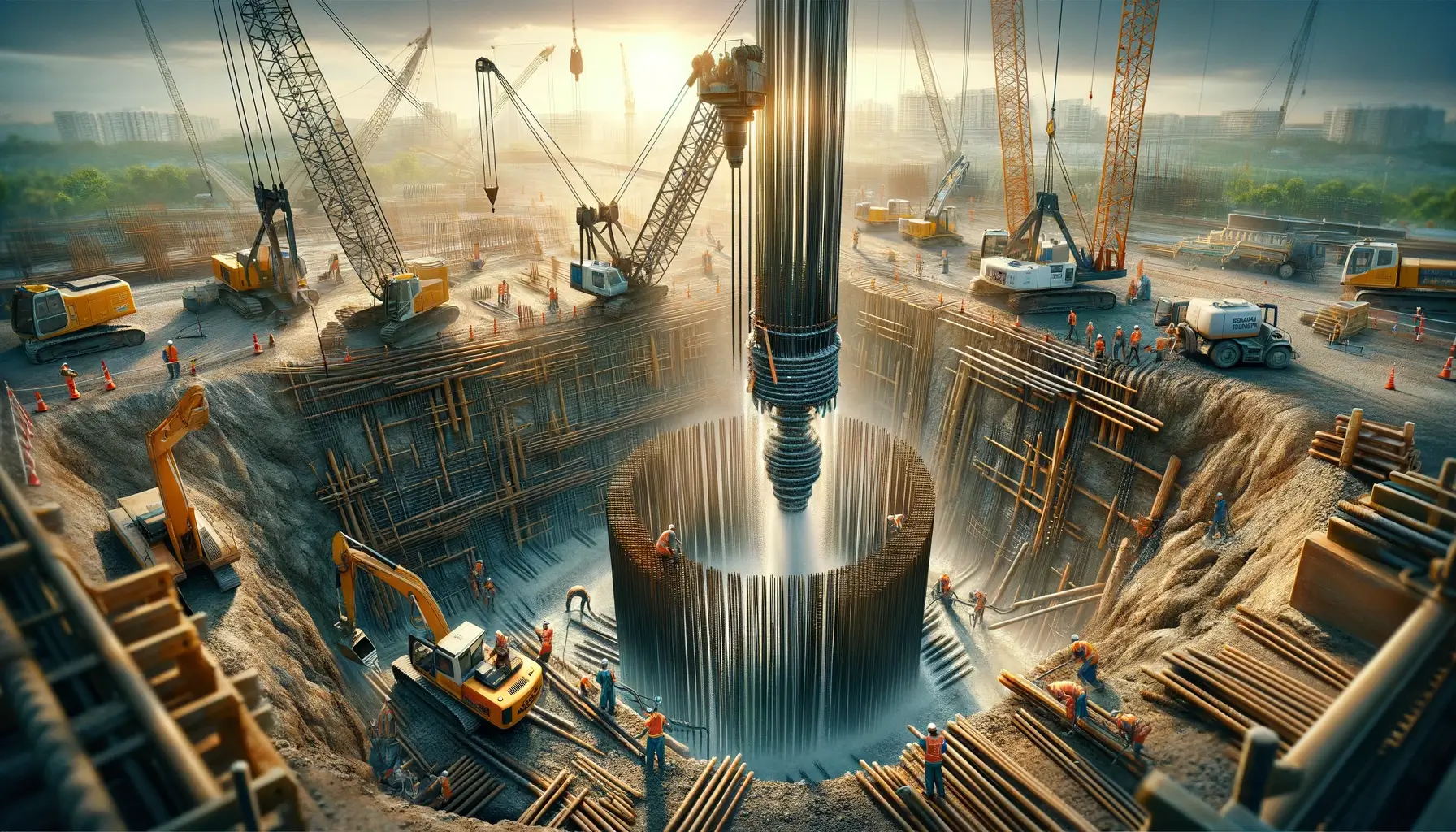
5 Steps in an Excavation Project
Introduction
There’s a saying: “A building is only as strong as its foundation”. It is indeed, true. However, most people often forget the importance of the excavation process, which is the cornerstone of strong foundations. It is never as simple as it seems. Excavation isn’t just digging holes in the ground. It is a series of meticulously planned-out steps which require perfect execution to ensure the success of a construction project. Helping you understand the key concepts in a typical excavation process is the reason why we made this article.
What Is Land Excavation?
To start with, we need to understand the definition of land excavation. It is the process of removing soil from the construction site. Depending on the amount of dirt to be removed, an excavation might need to use heavy machinery, such as bulldozers, excavators, front loaders, backhoes and heavy-duty haul trucks.
Excavation is a vital process in determining how much stress a structure will be able to withstand. In that essence, excavation is often used in construction to grade and lay the foundation for the structure above. However, sometimes, excavation involves tunnelling and creating wall shafts and earthworks. It is important to get it right at the start of a project. Therefore, only seasoned engineers and contractors can accurately determine the amount of work required to excavate a job site.
Furthermore, excavation also plays a supportive role in creating trenches and channels for drainage pipes. The excavation process also includes connecting the infrastructure utilities service, such as phone lines, electricity, and internet, to the job site.
Now that we have learnt the importance of excavation in a construction project, let’s dive into the steps in an excavation project.
Step One: Planning and Site Assessment
Behind every successful excavation project is a detailed, well-thought-out plan. A contractor needs to conduct an in-depth site assessment to gather information about the soil type, existing structures, and utility lines. This assessment also helps the contractor to become aware of potential obstacles that might hinder the excavation process. From these data, they gain valuable insights which will guide the entire excavation project.
Step Two: Clearing the Site
After a thorough site assessment, the next step is site clearing. The contractor will start removing any existing structures, trees, or vegetation that could interfere with the excavation process. The goal is to prepare the ground for the subsequent step which involves digging.
An excavation contractor often makes use of specialized vehicles like excavators, bulldozers or cranes to topple down old buildings. As for trees and vegetation, feller bunchers are often brought to the site to cut down trees, while operators use skidders to transport logs. After that, a contractor will transport these materials off-site to either salvage or recycle them for future use, or dispose of them properly in accordance with local regulations.
Step Three: Defining the Boundaries
With the site cleared, the contractor proceeds to the next excavation step which involves setting up the boundaries for excavation. Using the plans of the proposed structure, professionals are able to determine the exact dimensions of the excavation. Based on that, heavy machinery operators can start digging accurately and precisely. The aim is to minimize wasted time that may have been the result of unnecessary digging.
Step Four: Excavating, Shoring and Inspecting
Now, they can start digging up the soil. Depending on the requirements of the general contractor or the owner, the contractor will perform the necessary earthworks, such as grading, fill and cut, and land levelling. They may utilize various types of equipment such as backhoes, excavators, or bulldozers.
It is crucial that the contractor works within the established boundaries to avoid compromising the structural integrity of the future building.
Once the excavation reaches the desired depth, the contractor will often shore up the walls and floors for safety purposes. There’s a multitude of materials that can be used in shoring which involves steel, timber, or hydraulic systems. These materials are brought to the construction site to support the excavated area and prevent potential cave-ins. To ensure the excavation meets the required specifications, the contractor usually conducts a thorough inspection after shoring.
Step Five: Building the Foundation
The foundation will laid after the excavation is completed and approved. The type of foundation to be laid depends on the building that’s being constructed and the soil type. After this, the contractor will begin backfilling the excavated site, and the construction process is free to continue.
Want to Hire an Excavation Contractor?
DEC is a network of professional sub-contractors. We have taken part in countless excavation projects, from small to large. The long list of successful projects in our portfolio is a testament to our capabilities and workmanship. You can entrust your project to us, and we will complete the excavation on time and on budget. In addition, we’re experts in demolition and concrete services. Contact us at https://dec-spe.com and a representative will get in touch with you shortly. We give you our quotations. Alternatively, if you want to know more about the general pricing for a typical excavation project, please visit this link here.





